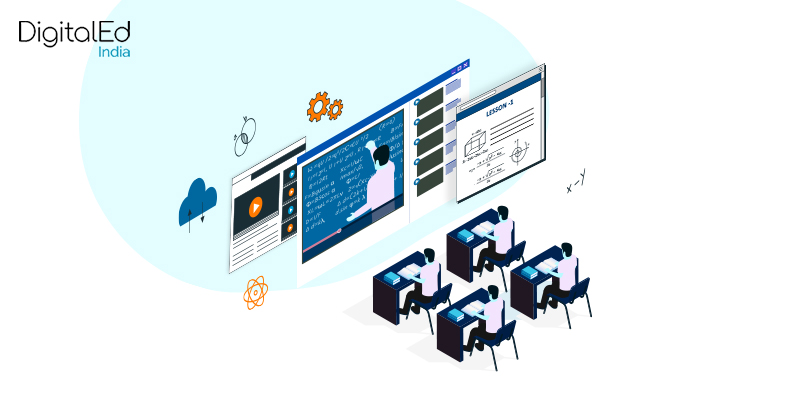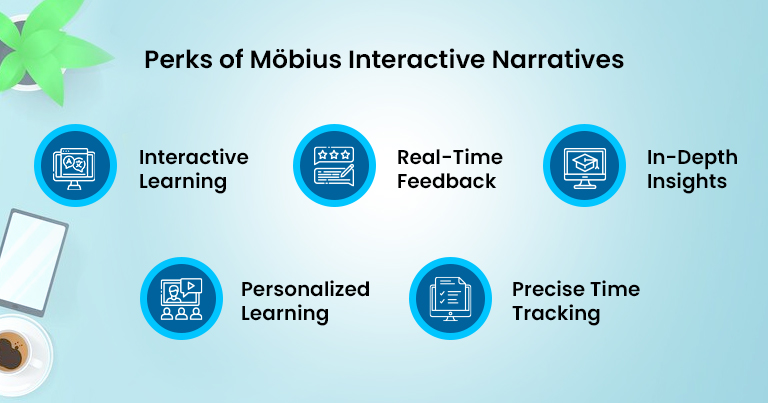Video-Based Learning Reinvented with Interactive Narratives

In today’s rapidly evolving educational landscape, the demand for interactive video-based learning, e-learning platforms and digital learning platforms has never been higher. These platforms, including e-learning management systems, play a pivotal role in providing accessible and flexible education solutions.
Among these advancements, video-based learning platforms have emerged as a powerful tool, revolutionizing the educational experience. With the widespread adoption of video learning, educators and learners alike have come to appreciate its benefits in terms of accessibility, engagement, and effectiveness.
The integration of video-based learning has opened up new avenues for educators to deliver dynamic digital content, enabling them to make the most of classroom time by encouraging meaningful interactions with students. However, while video learning holds great promise, a pressing challenge remains:
How can we effectively assess students’ comprehension and attention during video-based lessons?
In this blog, we delve into a comprehensive approach to address this challenge, seeking to enhance the effectiveness of video-based learning by making it more engaging, interactive, and readily accessible beyond the traditional classroom setting. By leveraging the power of technology, we can unlock the full potential of video content and create a richer and more rewarding educational journey for students.
The Expansive Reach of Video-Based Learning:
Video learning is not confined to the realm of online education; its applications extend far beyond virtual learning environments. In traditional classrooms, pre-recorded video lessons can serve as valuable supplementary resources, providing students with opportunities to review and reinforce their understanding.
Moreover, educators can leverage videos to introduce complex topics or illustrate real-world examples, making classroom learning more interactive and engaging.
A Paradigm Shift in Perception:
Prior to the pandemic, many teachers and parents expressed reservations about the extensive use of technology, fearing that smartphones and tablets would impede students’ development. However, the prolonged period of remote learning due to the pandemic challenged these preconceptions.
Educators and parents witnessed the advantages of video-based learning platforms as students responded positively to video representations of concepts. Videos offered a visual and auditory engagement that fostered better comprehension, retention, and overall enthusiasm for learning.
Addressing the Challenge of Evaluation:
Let’s imagine a real-world scenario: In a high school biology class, Ms. Mary, an experienced educator, embraces video-based learning to complement her in-person lectures. She recognizes the potential of video content to enhance student engagement and comprehension. However, she faces a challenge: she cannot always gauge if her students are fully grasping the concepts presented in the videos.
To address this concern, Ms. Mary decides to implement an interactive video-based learning strategy using in-video questions and real-time assessment. She curates a series of engaging educational videos on various biological processes, such as cell division, photosynthesis, and genetics. For each video, she embeds in-video questions at strategic points that require students to apply their understanding and critical thinking skills.
During the class, Ms. Mary shares the first video with her students and encourages them to watch it attentively. As the video progresses, the screen pauses, and an in-video question appears on the screen, prompting the students to answer before proceeding further. The question requires them to identify the stages of cell division and explain their significance. After answering the question, students receive immediate feedback, either through a brief explanation or a link to additional resources.
Ms. Mary closely monitors the students’ responses and is pleased to see that most of them have answered correctly, demonstrating a good grasp of the topic. However, she notices that a few students are struggling with the concept of cytokinesis, a crucial phase of cell division. This insight prompts her to pause the video and delve deeper into the topic, offering additional explanations and examples to ensure everyone understands the concept thoroughly.
As the class progresses, Ms. Mary starts to share this interactive video-based learning outside the classroom, and in class, she discusses the problem in more detail with the students. The students become increasingly engaged, actively participating in the learning process inside and outside the classroom. The interactive videos not only help Ms. Mary gauge their comprehension in real time but also provide valuable feedback on their understanding.
Outside the classroom, students have the flexibility to access videos and interactive elements on the school’s learning management system. This empowers them to review the content at their own pace, further reinforcing their understanding.
The implementation of interactive video-based learning has transformed Ms. Mary’s biology class, fostering deeper engagement and better comprehension among her students. By incorporating in-video questions and real-time digital assessment, Ms. Mary can address the challenge of evaluation, ensuring that her students are actively engaged with the video content and grasp the concepts effectively.
Enhancing Engagement and Success Rates with Möbius Interactive Narratives:
By fostering engagement, interactivity, and accessibility, video learning becomes a powerful tool for nurturing students’ understanding and enthusiasm for learning. To enhance the video learning experience, we introduce the Möbius platform. The platform allows for the creation of interactive video lessons with more dynamic content by providing:

- Interactive Video Lessons: With Möbius, ordinary videos transform into interactive video-based learning experiences. Embed thought-provoking questions at strategic points, encouraging students to apply their understanding and critical thinking skills.
- Real-time Assessment and Feedback: Möbius provides instant feedback on student responses to in-video questions. Promptly identify strengths and areas for improvement, fostering continuous learning and improvement.
- Data Analytics for Personalization: Gain valuable insights into students’ learning progress. Customize teaching methodologies to address a range of diverse needs, thereby boosting motivation and fostering improved academic performance.
- Time Tracking for Responsible Learning: Promote focused learning habits by tracking time spent on the platform. Optimize device time for education, maintaining a healthy balance with other activities.
Interactive video-based learning, exemplified by Möbius’s Interactive Narratives, has the potential to make a remarkable difference in student engagement and success rates. The integration of technology in education continues to evolve, and it is crucial for educators to explore and leverage these advancements to enhance student learning outcomes. Through the incorporation of digital learning platforms with Interactive Narratives, educators can create a more interactive and engaging learning environment, ensuring that education remains accessible, effective, and adaptable to diverse learning styles.
Want to explore the Möbius experience? Book a personalized demo today!
Author
Deepali Singh